Note: Yale School of the Environment (YSE) was formerly known as the Yale School of Forestry & Environmental Studies (F&ES). News articles and events posted prior to July 1, 2020 refer to the School's name at that time.
 While Antigua suffered relatively little damage from Hurricane Irma, Barbuda, some 40 miles to the north, was 95 percent destroyed.
While Antigua suffered relatively little damage from Hurricane Irma, Barbuda, some 40 miles to the north, was 95 percent destroyed.
Last week, Hurricane Irma roared across the Caribbean, splintering homes and lives, and decimating Barbuda, St. Martin, and other small island nations. Irma, a Category 5, was the second major hurricane of the season, coming on the heels of Harvey, which pounded Houston and dumped a record 50 inches of rain in South Texas.
We were curious what it’s like to live with the threat of hurricanes and what’s being done to build climate resilience in the Caribbean, so we reached out to Lia Nicholson ’14 M.E.M., a project consultant with the Department of Environment, Government of Antigua and Barbuda. Her work includes on-the-ground project development, climate change policy and law, and other environment issues. She also represents Antigua and Barbuda in multilateral climate negotiations.
After graduating from the Yale School of Forestry & Environmental Studies (F&ES) where she studied climate change adaptation and mitigation, Nicholson returned to her native Antigua as a Gruber Fellow with the Department of Environment. Now a full time employee based in Nigeria, she helped to pass the Environmental Protection and Management Act of 2015, legislation that established the Sustainable Island Resource Framework (SIRF) Fund and created a legal mandate for much of the work she does today.
We reached her by Skype to talk about Irma and to learn about how small island nations are preparing for massive hurricanes and adapting to a changing climate.
Lia Nicholson: My family and friends in Antigua are fine. Antigua didn’t sustain much damage and the country had a couple of days to prepare. Antigua suffered Category 2 to 3 winds, and while that’s a very serious hurricane for many countries, in the Caribbean we’re prepared for those kinds of things. But Barbuda, located about 40 miles from Antigua, got a direct hit. The eye passed right over the island. We have an office over there (in the Department of Environment). We weren’t able to reach our contacts for a while. Now everyone’s being evacuated to Antigua because of Hurricane Jose, which is now coming closer. My family is taking in five or six people. I’m overseas. It’s been hard to listen and support as I can from afar. I’m just grateful that Antigua was spared.
We were curious what it’s like to live with the threat of hurricanes and what’s being done to build climate resilience in the Caribbean, so we reached out to Lia Nicholson ’14 M.E.M., a project consultant with the Department of Environment, Government of Antigua and Barbuda. Her work includes on-the-ground project development, climate change policy and law, and other environment issues. She also represents Antigua and Barbuda in multilateral climate negotiations.
After graduating from the Yale School of Forestry & Environmental Studies (F&ES) where she studied climate change adaptation and mitigation, Nicholson returned to her native Antigua as a Gruber Fellow with the Department of Environment. Now a full time employee based in Nigeria, she helped to pass the Environmental Protection and Management Act of 2015, legislation that established the Sustainable Island Resource Framework (SIRF) Fund and created a legal mandate for much of the work she does today.
We reached her by Skype to talk about Irma and to learn about how small island nations are preparing for massive hurricanes and adapting to a changing climate.
Thanks for taking the time to talk during such a serious and challenging ordeal. How are your family and friends fairing back home?
Lia Nicholson: My family and friends in Antigua are fine. Antigua didn’t sustain much damage and the country had a couple of days to prepare. Antigua suffered Category 2 to 3 winds, and while that’s a very serious hurricane for many countries, in the Caribbean we’re prepared for those kinds of things. But Barbuda, located about 40 miles from Antigua, got a direct hit. The eye passed right over the island. We have an office over there (in the Department of Environment). We weren’t able to reach our contacts for a while. Now everyone’s being evacuated to Antigua because of Hurricane Jose, which is now coming closer. My family is taking in five or six people. I’m overseas. It’s been hard to listen and support as I can from afar. I’m just grateful that Antigua was spared.
 Lia Nicholson '14 M.E.M., who works for the Department of Environment, Government of Antigua and Barbuda, is an expert in climate adaptation and mitigation.
Lia Nicholson '14 M.E.M., who works for the Department of Environment, Government of Antigua and Barbuda, is an expert in climate adaptation and mitigation.
You said that Antigua had a couple of days to prepare. What types of things can people do to prepare for these massive hurricanes?
Nicholson: The government needs to make sure that all the waterways are clear and that infrastructure is ready. People put shutters on their windows. If you don’t have premade shutters, you need to buy plywood and nail it onto your building. It can end up being two or three days of work and cost up to $1500. People have to make these preparations not knowing whether the hurricane will end up making landfall. And all this work goes unquantified.What are you doing at the national level to build climate resilience for Antigua and Barbuda?
We are starting a national adaptation planning process with some funding from the Green Climate Fund. All buildings, whether you’re a homeowner or business, should be built in safer places. This is a challenge for a small island where tourism is our main industry. All the hoteliers want their resorts built on the sand. It’s difficult to tell them, “No, you must build them further back.” They just go to the next island that’s willing to build on the sand. There has to be awareness in the private sector so it’s in the investor’s best interest to build in a better way. And it takes good governance and forward thinking to really enforce that at the national level. There are short-term risks when you say, “No, this is the development policy.” But then there are long term risks when you let things happen that expose countries to climate change.How informed and concerned about climate change are local people?
Nicholson: About a decade ago, there was a study done in Antigua and Barbuda about climate change awareness and knowledge, and something like 95 to 97 percent of the people said they understand what climate change is and think it’s a major problem. It’s not like the U.S. where you have deniers and it’s become a partisan issue. Everybody in Antigua knows this is a major challenge; we experience it on a daily basis. We just came out of a drought where, in just three years, we lost a year of rain. On a good day, you may have six hours of water. On a bad day, you might get one hour of water at midnight. So whether it’s slow onset drought or extreme hurricanes, for people in Antigua, it’s not an awareness problem, it’s really an issue of long term planning and infrastructure.How do people who live in hurricane-prone areas prepare psychologically for this kind of stress?
Cities Not Ready for Weather Extremes — No Matter What You Call Them
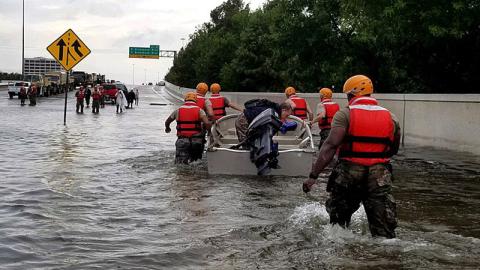 <div> Xuhui Lee, a professor of meteorology at the Yale School of Forestry & Environmental Studies, says that it’s difficult to link climate change to two recent hurricanes that devastated parts of the U.S. and the Caribbean. But decades of scientific research, he says in an interview, do suggest that weather extremes such as Hurricanes Harvey and Irma will become more common. And cities will pay a steep price. <a href="http://environment.yale.edu/news/article/xuhui-lee-cities-not-prepared-for-weather-extremes/">Read more</a></div>
<div> Xuhui Lee, a professor of meteorology at the Yale School of Forestry & Environmental Studies, says that it’s difficult to link climate change to two recent hurricanes that devastated parts of the U.S. and the Caribbean. But decades of scientific research, he says in an interview, do suggest that weather extremes such as Hurricanes Harvey and Irma will become more common. And cities will pay a steep price. <a href="http://environment.yale.edu/news/article/xuhui-lee-cities-not-prepared-for-weather-extremes/">Read more</a></div>
Nicholson: You need to be well informed and you need as much advanced notice as possible, and the consequences of that is a lot of stress and anxiety. Mothers with kids, the elderly, persons with physical and mental disabilities, and low-income communities who are in poor housing are all especially vulnerable. Interpersonal dynamics get intensified during a hurricane. People get stressed out; they lash out. We need to support people not only from the physical aspects, but also the emotional aspects. If you have a safer home, you’re going to feel more at ease that it’s going to withstand the storm. Even for me being far away, it’s stressful. We couldn’t get in touch with our colleagues in Barbuda for almost three days.
The churches and community organizations are really important. We’re also partnering with American University of Antigua; they have an emotional intelligent program where they train trainers within the community and the schools. They’ve seen improvements in the teacher approach with kids, kids with each other, and kids with their parents. We’re really excited to have this partnership with professors who have studied this so it’s more a part of our climate resilience.
For those days preceding the hurricane it is very still and calm, and then during the hurricane itself, it’s super noisy. Everything is bashing around. Things get sucked up into the air. Roofs are flying off. Things are banging around your house. Going through a hurricane — especially for kids — is an intense experience.
The churches and community organizations are really important. We’re also partnering with American University of Antigua; they have an emotional intelligent program where they train trainers within the community and the schools. They’ve seen improvements in the teacher approach with kids, kids with each other, and kids with their parents. We’re really excited to have this partnership with professors who have studied this so it’s more a part of our climate resilience.
Have you ever been in a hurricane?
Nicholson: Yeah, I’ve been in a couple. The worst one I went through was Hurricane Luis in 1995. It was a Category 4 and lasted 24 hours. The eye went over Antigua. My family was in the area of the house that had concrete everywhere; you need that protective shell. Then it started flooding and people were trying to make sure the water could drain. During the eye, everything quieted down and we went outside. There was not a single leaf left on any tree. And the ocean water was very brown and frothy. All the silt gets stirred up and water was crashing everywhere. But during the eye, the air was dead calm. And then the wind switches sides; so if the wind goes north to south, when the eye goes past you, it goes south to north. Everything blows one way and then everything blows the other. You get a lot of the damage after the eye passes. The doors were being sucked out. I remember my dad and my uncle physically trying to blockade the doors because the wind was so strong. When Hurricane Irma was approaching, my mom made sure to get rope to bind the doors, and nail wood directly to the doors so they wouldn’t open this time round.For those days preceding the hurricane it is very still and calm, and then during the hurricane itself, it’s super noisy. Everything is bashing around. Things get sucked up into the air. Roofs are flying off. Things are banging around your house. Going through a hurricane — especially for kids — is an intense experience.
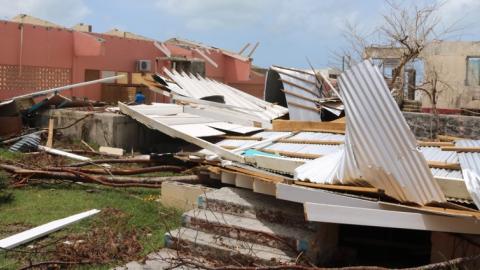 Initial estimates of the damage in Barbuda exceed $1.5 million.
Initial estimates of the damage in Barbuda exceed $1.5 million.
That sounds terrifying. What about after the hurricane? How do you address post-disaster recovery in your planning?
Nicholson: We try to build resilience, meaning the hurricane hits and the country can be up and running the next day or within a couple of days. The country is 60-100 percent reliant on desalination. But when you get a hurricane, there is too much sediment to desalinate the water so you have major water issues. It’s really important for people to have cisterns. Cisterns are under the house, whereas water storage tanks are outside of the house and often get destroyed during a hurricane. But cisterns are very expensive to build, so they’re not that common. After Hurricane Luis it took three months to get electricity restored island-wide. Now we have solar energy. If your panels survived, they need to be grid-interactive; it does no good to have solar if it’s dependent on the grid. In Antigua, a lot of the solar that’s come online has been grid-tied. It’s much cheaper, but it’s not that easy to change. So we’ve been working to improve our climate resilience even within our renewable energy sector. We’ve also been working to make sure that the police, defense force, and fire station are in really strong buildings. In Barbuda, the hospital was totally wiped out. The police station lost its roof and the police had to go to the fire station during the hurricane. You need to have your critical services really secure.The question is, how do we build this into resilience? I work on grant applications and I get a lot of pushback when I try to make that case — Is this even adaptation if it’s post-disaster recovery? Who should be paying for that? It’s really tough to get the funding to do it all. And frankly there’s not enough funding. Every dollar has to be spent really strategically and efficiently to have the impact that’s needed.
As a climate negotiator for a small island nation, how do you build support from other countries at international climate conferences?
Nicholson: That’s been one of the most interesting parts of my job since I graduated from F&ES. I think how much leverage you have internationally depends on the leadership you have nationally. Once you get there, it’s really about the relationships you build with different alliances and partners. You have to look at trade-offs, and what’s politically and economically feasible for all countries. My boss, Ambassador Diann Black-Layne, has been in negotiations for a long time, about 15 years. Diann is a really strong advocate; she can engage with countries on the issues. Countries such as the U.S. can have a team of 30 advisors, one for each issue, and we basically have two or three people covering the entire thing. It’s not a level playing field, but we have the Alliance of Small Island States (AOSIS) and we have really good leaders for all of the areas. For example, Belize leads on climate finance; Jamaica leads on adaptation. Most multilateral processes are very slow, but what we’re seeing now is that 20 years of work at the international level has resulted in the Paris Agreement, which is great momentum forward.What are climate models predicting for hurricanes in the Caribbean?
Nicholson: The impact on hurricanes from climate change is one of the widest divergences across climate models. There’s consensus that the intensity will increase, but I haven’t seen projections of what that means for a person living in Antigua. Does that mean where we used to get Category 2s and 3s are we are now going to get Categories 3s, 4s, and even 5s? The baseline seems to be changing. The IPCC (Intergovernmental Panel on Climate Change) is really important. That’s really the authoritative science we use in our day-to-day discussions on climate change adaptation. For islands that are really small, or anyone really, to come up with climate change predications at a scale which is useful for engineers is very difficult. But we need to get to that level if we’re going to adapt. We’re already exceeding what was predicted. If we take our very high level projections — for example, between a one and four degree temperature rise for Antigua; between 10 and 40 percent decrease in rainfall — you need to have very different planning processes and associated costs. These are all things we’re going to be working on with our national adaptation plan. But we need better science at a granular level for that process.What would you say to students who are working on these issues?
Nicholson: The message I would tell students is, really try to get your research to the users. It’s really important. It can have big implications. In the Caribbean, climate change is at the top of the political and technical agenda. But this is something that we’re figuring out as we go. You see practices that you know are outdated, and you know that academia and the literature has moved on a lot further than what we’re still doing on the ground. So, especially in small islands, F&ESers can get meaningful experiences and have impact on the ground.For those interested in donating to the victims of Hurricane Irma, Lia Nicholson suggests the following organizations:
- The Official Antigua & Barbuda Relief and Rebuilding Fund.
- ABSAR’s Barbuda Relief Fund. Donations can be made by dropping off contributions at their medic station in Falmouth Harbour or email info@absar.org for wiring instructions.
- Barbuda Relief and Rebuilding Fund via Antigua Commercial Bank and Caribbean Union Bank, administered by the Government of Antigua & Barbuda.
As Harvey’s Floodwaters Recede, How Should Houston Rebuild?
 <div> <div> <p> Tropical Storm Harvey is the third major flood in southeast Texas in three years. In an interview with Yale Environment 360, flood expert Philip Bedient says the region will remain vulnerable to disasters if communities don’t rebuild with climate change in mind. <a href="http://e360.yale.edu/features/as-harveys-floodwaters-recede-how-should-houston-rebuild">Read the interview</a></p> <div> </div> </div></div>
<div> <div> <p> Tropical Storm Harvey is the third major flood in southeast Texas in three years. In an interview with Yale Environment 360, flood expert Philip Bedient says the region will remain vulnerable to disasters if communities don’t rebuild with climate change in mind. <a href="http://e360.yale.edu/features/as-harveys-floodwaters-recede-how-should-houston-rebuild">Read the interview</a></p> <div> </div> </div></div>
Hurricanes Can Push Floodwaters Far Inland
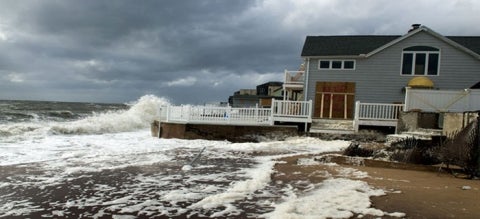 <p> This year the National Weather Service created a new alert system for Atlantic and Gulf Coast storm surges, Yale Climate Connections reports. It’s in addition to the existing hurricane alerts. That’s because storm surge and hurricane winds do not always happen at the same time. And the areas at risk can be surprisingly large. <a href="https://www.yaleclimateconnections.org/2017/09/hurricanes-can-push-dangerous-floodwaters-shockingly-far-inland/">Read more</a></p><div> </div>
<p> This year the National Weather Service created a new alert system for Atlantic and Gulf Coast storm surges, Yale Climate Connections reports. It’s in addition to the existing hurricane alerts. That’s because storm surge and hurricane winds do not always happen at the same time. And the areas at risk can be surprisingly large. <a href="https://www.yaleclimateconnections.org/2017/09/hurricanes-can-push-dangerous-floodwaters-shockingly-far-inland/">Read more</a></p><div> </div>
Study Examines Attitudes Toward Storm Threats
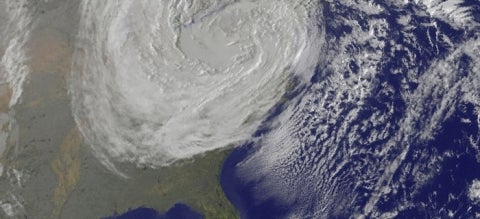 As Superstorm Sandy battered the U.S. East Coast in 2012, residents in communities along the Connecticut shore received “mandatory” evacuation orders, but most people didn’t leave. A new Yale report provides insights into why some people decide to evacuate in the face of a weather emergency and why others try to ride out the storm. <a href="http://environment.yale.edu/news/article/should-i-stay-or-should-i-go-report-examines-public-responses-to-storm-threats/">Read more</a>
As Superstorm Sandy battered the U.S. East Coast in 2012, residents in communities along the Connecticut shore received “mandatory” evacuation orders, but most people didn’t leave. A new Yale report provides insights into why some people decide to evacuate in the face of a weather emergency and why others try to ride out the storm. <a href="http://environment.yale.edu/news/article/should-i-stay-or-should-i-go-report-examines-public-responses-to-storm-threats/">Read more</a>
Yale Initiative, F&ES Map Risks in Post-Earthquake Nepal
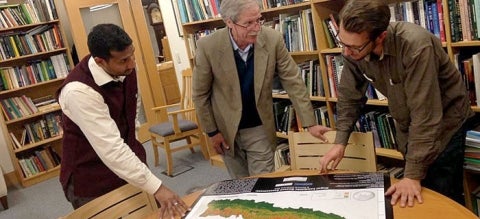 <div> The F&ES-based Yale Himalaya Initiative last year completed a map of Nepal that highlights the risk for landslides across the entire country, and hopes it serves as a launching point for future collaborations with Himalaya-based organizations. <a href="http://environment.yale.edu/news/article/yale-himalaya-initiative-maps-risks-in-post-earthquake-nepal/">Read more</a></div><div> </div>
<div> The F&ES-based Yale Himalaya Initiative last year completed a map of Nepal that highlights the risk for landslides across the entire country, and hopes it serves as a launching point for future collaborations with Himalaya-based organizations. <a href="http://environment.yale.edu/news/article/yale-himalaya-initiative-maps-risks-in-post-earthquake-nepal/">Read more</a></div><div> </div>
Published
September 13, 2017